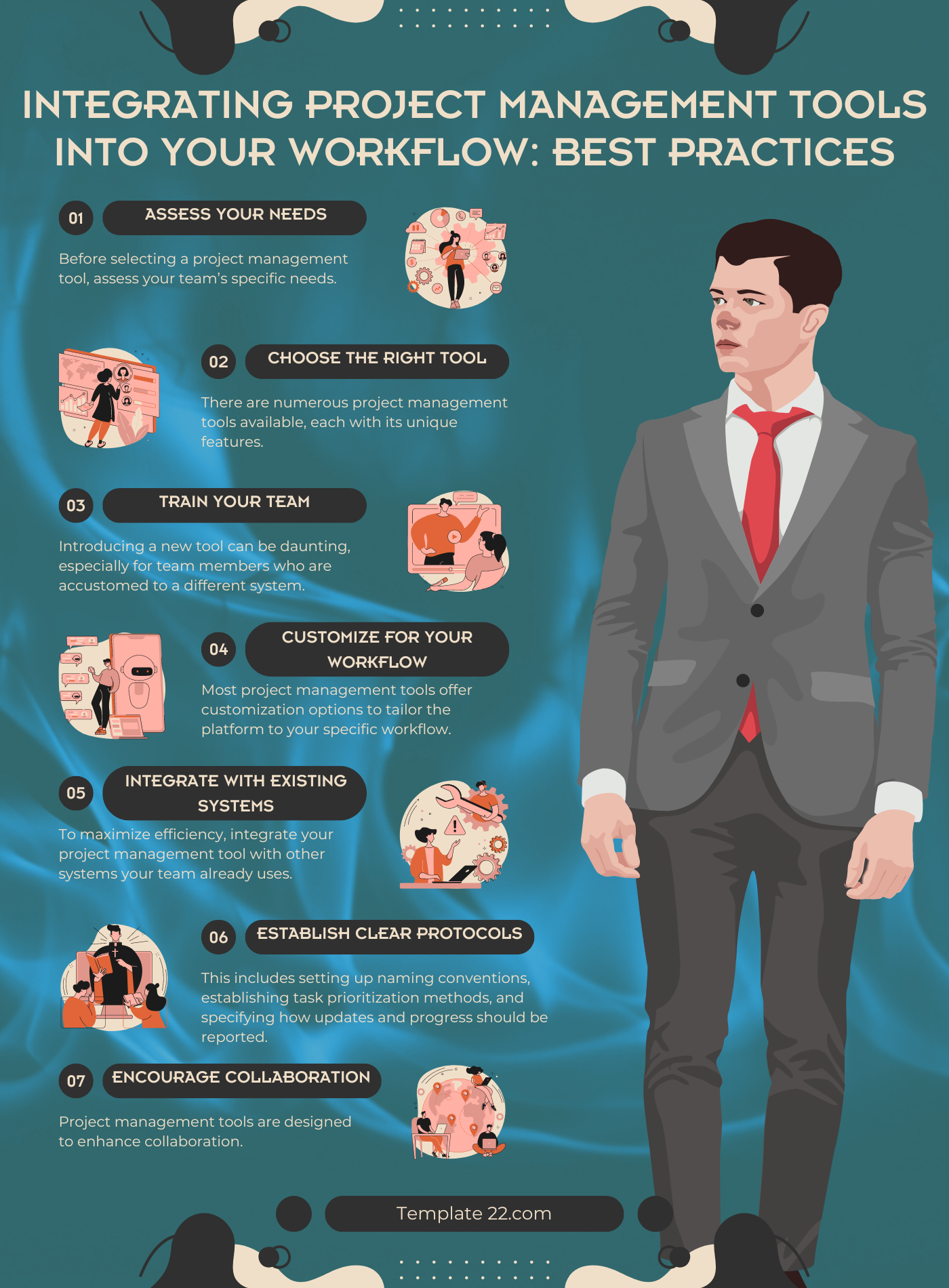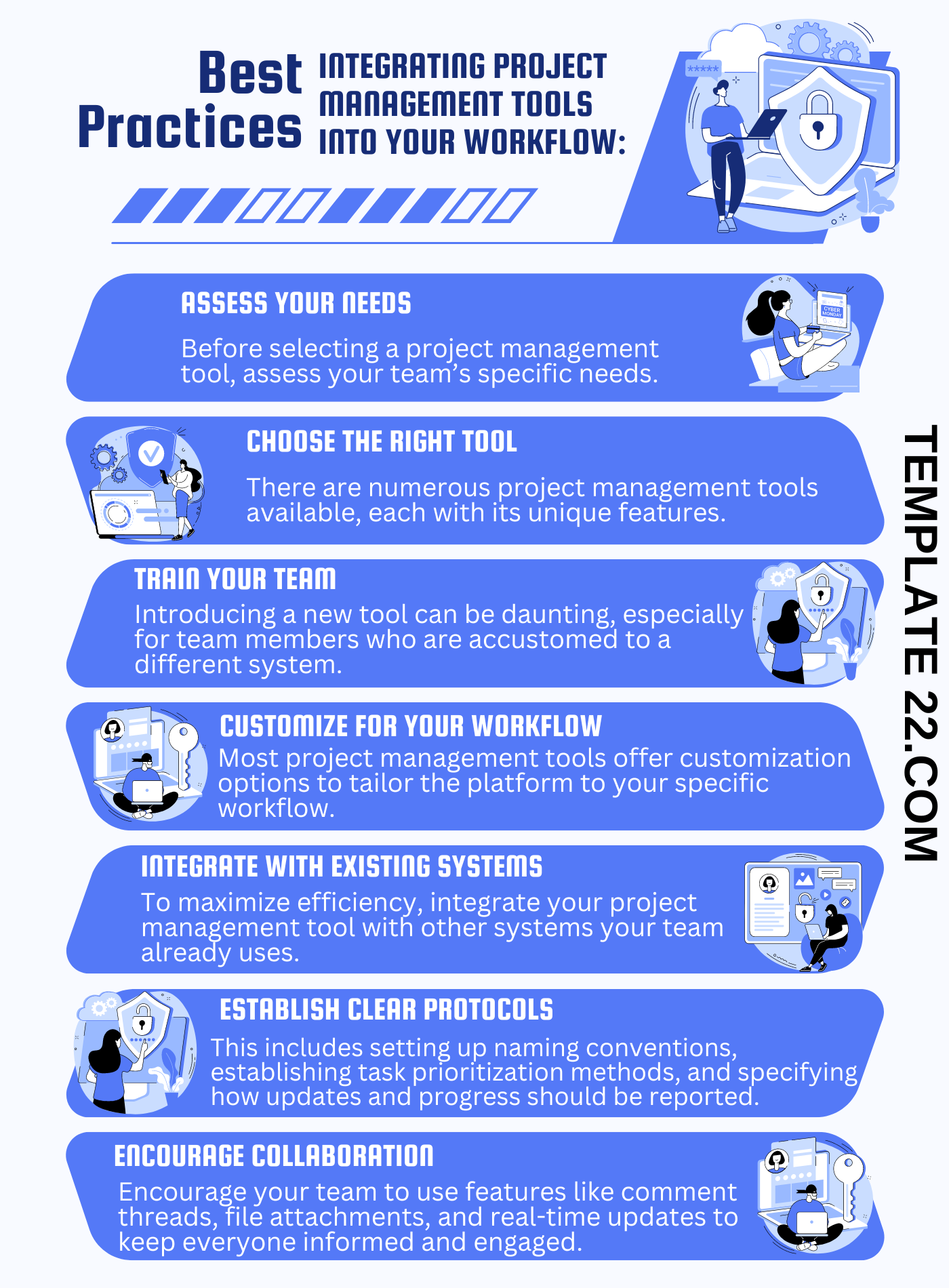 Project management tools have become essential in today’s fast-paced, digital work environment. They streamline processes, enhance collaboration, and ensure that projects are completed on time and within budget. However, simply choosing a tool is not enough; it’s crucial to integrate it effectively into your workflow. Here are some best practices for seamlessly incorporating project management tools into your daily operations.
Project management tools have become essential in today’s fast-paced, digital work environment. They streamline processes, enhance collaboration, and ensure that projects are completed on time and within budget. However, simply choosing a tool is not enough; it’s crucial to integrate it effectively into your workflow. Here are some best practices for seamlessly incorporating project management tools into your daily operations.
- Assess Your Needs
Before selecting a project management tool, assess your team’s specific needs. Consider the size of your team, the complexity of your projects, and the features that will best support your workflow. Whether you need robust scheduling capabilities, real-time collaboration, or advanced reporting features, identifying these requirements upfront will guide you to the most suitable tool.
CLICK HERE TO DOWNLOAD 300+ PROJECT MANAGEMENT TEMPLATES & DOCUMENTS IN EXCEL
- Choose the Right Tool
There are numerous project management tools available, each with its unique features. Popular options include Trello for its simplicity and visual approach, Asana for task tracking, and Jira for software development projects. The key is to choose a tool that aligns with your team’s workflow and project management style. Take advantage of free trials to test a few options before making a decision.
- Train Your Team
Introducing a new tool can be daunting, especially for team members who are accustomed to a different system. Provide comprehensive training sessions to ensure everyone is comfortable using the new tool. This can include live demonstrations, step-by-step tutorials, and Q&A sessions. The goal is to reduce the learning curve and promote confidence in using the new system.
- Customize for Your Workflow
Most project management tools offer customization options to tailor the platform to your specific workflow. Set up your project structures, create custom fields, and configure workflows to match your team’s processes. This ensures that the tool adapts to your way of working rather than forcing your team to adapt to the tool.
- Integrate with Existing Systems
To maximize efficiency, integrate your project management tool with other systems your team already uses. Many tools offer integrations with popular apps like Slack, Google Drive, and GitHub. This allows for seamless communication, file sharing, and version control, keeping all project-related activities within a single platform.
CLICK HERE TO DOWNLOAD 300+ PROJECT MANAGEMENT TEMPLATES & DOCUMENTS IN EXCEL
- Establish Clear Protocols
Define clear protocols for how the tool should be used. This includes setting up naming conventions, establishing task prioritization methods, and specifying how updates and progress should be reported. Clear guidelines help maintain consistency and ensure that everyone uses the tool effectively.
- Encourage Collaboration
Project management tools are designed to enhance collaboration. Encourage your team to use features like comment threads, file attachments, and real-time updates to keep everyone informed and engaged. This fosters a collaborative environment where team members can easily share ideas, provide feedback, and resolve issues.
- Monitor and Adjust
Regularly monitor how the tool is being used and gather feedback from your team. Are there underutilized features? Are there any pain points? Use this feedback to make necessary adjustments. This might involve additional training, reconfiguring settings, or exploring alternative tools that better meet your team’s evolving needs.
- Leverage Automation
Many project management tools offer automation features that can significantly reduce manual workload. Automate repetitive tasks like task assignments, deadline reminders, and status updates. This not only saves time but also reduces the risk of human error, allowing your team to focus on more critical aspects of the project.
- Evaluate Performance
Lastly, evaluate the performance of your projects using the reporting and analytics features provided by the tool. Analyze key metrics such as task completion rates, time spent on tasks, and resource allocation. These insights can help you identify areas for improvement and optimize your project management processes.
Conclusion
Integrating project management tools into your workflow can dramatically improve your team’s productivity and project outcomes. By carefully selecting the right tool, providing thorough training, customizing the platform, and establishing clear usage protocols, you can ensure a smooth integration process. Continuous monitoring, feedback collection, and leveraging automation further enhance the efficiency and effectiveness of your project management efforts. Ultimately, the right tool, used correctly, can be a game-changer for your organization’s project success.



